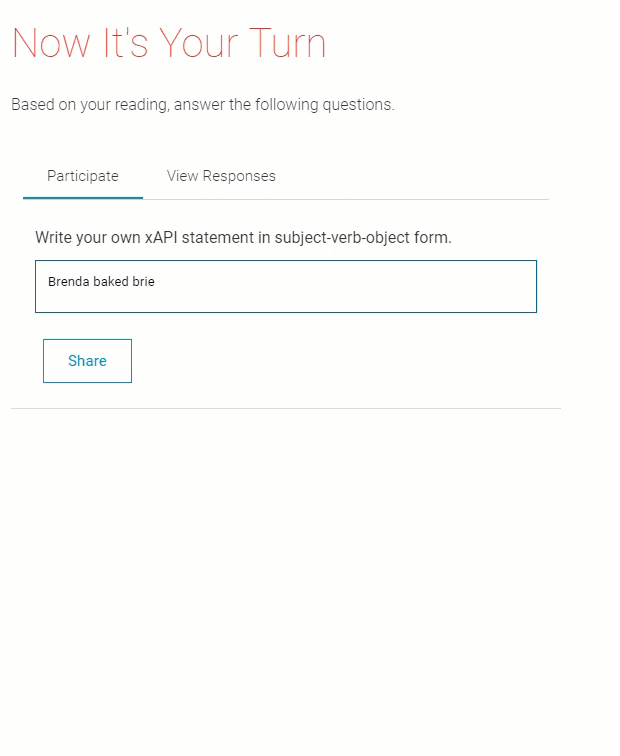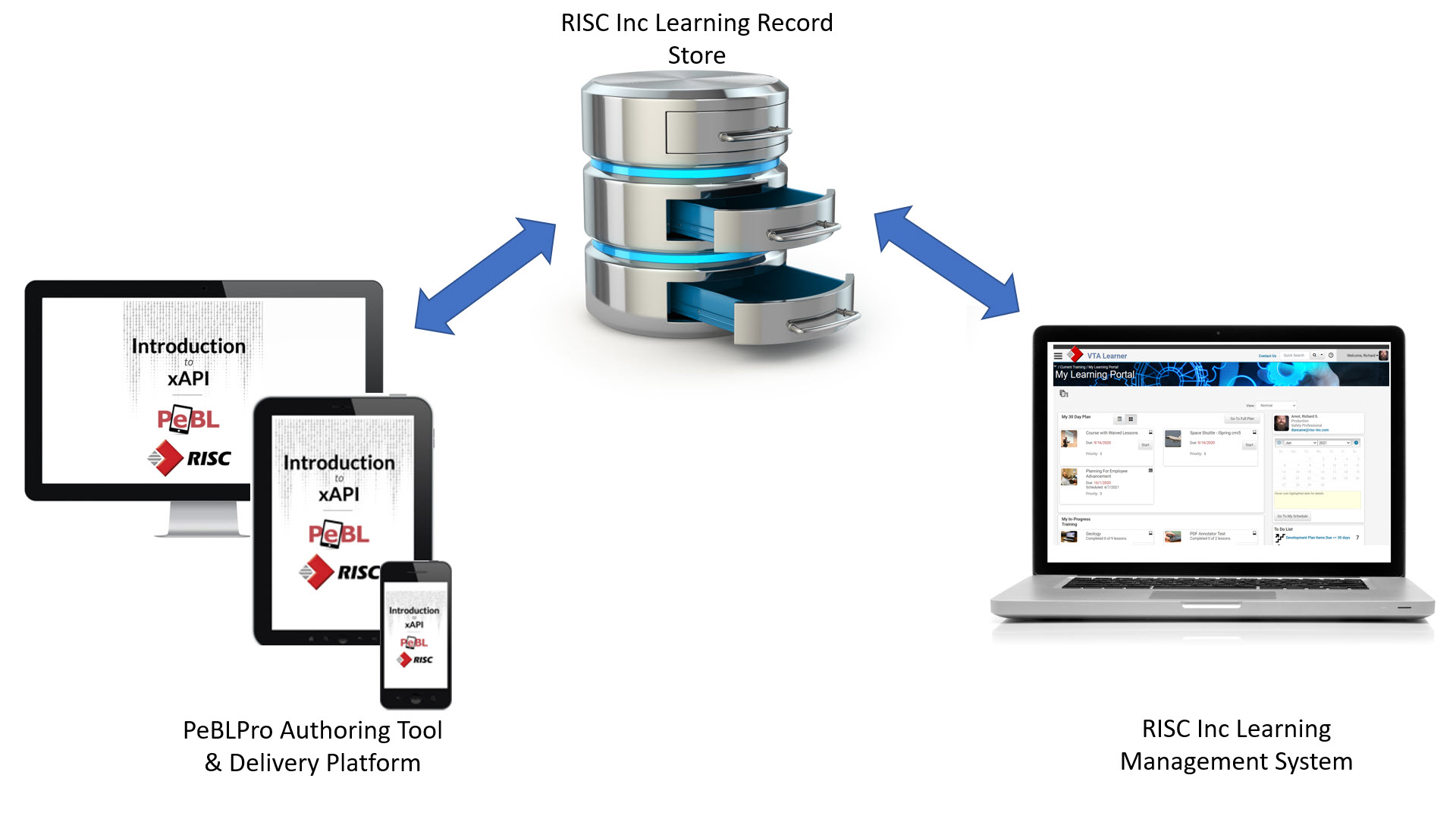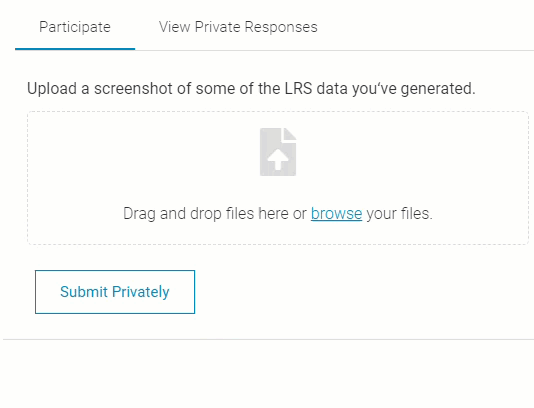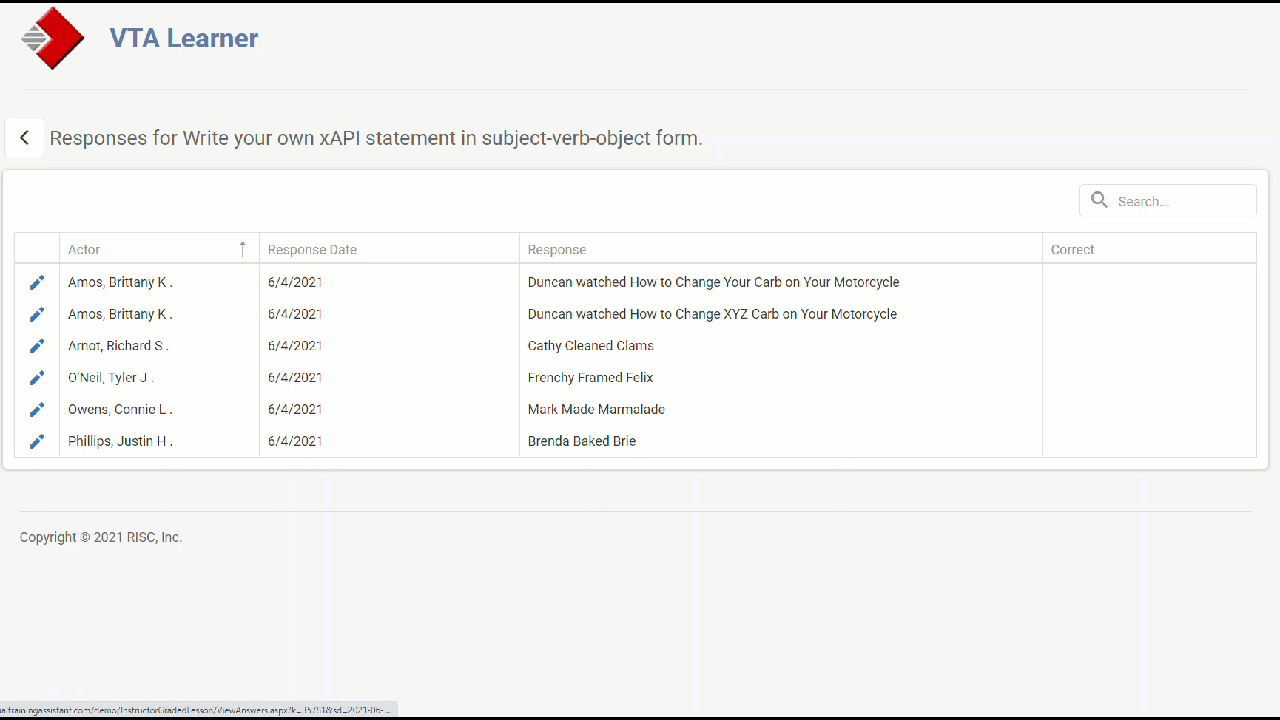Cross-posted to the PeBL.Pro blog. RISC and PeBL collaborated on a demonstration of a learning experience that facilitates learners submitting their own practice work using PeBL Pro, and an instructor grading that work in RISC’s LMS, all facilitated by xAPI. Click here to see a recorded demonstration.
Complex Skills Development
Pro Product Manager Judy Katz and I have had a running discussion for years about how to design learning for maximum effectiveness. In both our careers, we developed training for high-impact subjects; leadership, graduate test prep, refinery operations, firefighting, and even lineman training. All of these topics require the development of complex skills. Skills that involve analysis and decision-making. The result of those decisions can be life or death.
So, how do we get better? There are lots of things we can do — establish context for your student, make training as similar as possible to real-life, develop training that fits the culture of the organization, and speak to the proper learner persona(s). Unfortunately there are situations where, as effective as it may be, it is not feasible to recreate for training. Moreover, many of the situations we are training students to respond to are infrequent. This is normally the case with emergency response training. We must teach a high-consequence response to a condition that the learners will not regularly experience. Enter the performance/feedback loop.
Julie Dirksen, author of Design For How People Learn explores complex skills development in a previous blog. The discussion focuses on the need for practice. If a student needs to be proficient at an infrequent task that must be performed without the opportunity to “phone a friend”, then they must practice. But practice alone doesn’t ensure proficiency. I need feedback to improve my performance. I need to know where I have opportunities for improvement and help shaping my behaviour from proficient to perfect.
When I first learned about the different interaction types available within PeBL Pro, I immediately wanted to know if I could send their data to our LRS to explore. The ability for instructional designers to provide learner-response question types is an efficient way to move beyond the true-false or multiple choice tests found in most authoring tools. Open-ended questions provide students the space and opportunity to analyze content and questions, synthesize their answers and communicate it. With a file upload, I can ask a student to take a picture of a final project or video a process to demonstrate performance.
How does xAPI help?
 The PeBL library sends xAPI statements for all of the students’ interactions with the content. Because xAPI provides a common structure for data, there is no need for middleware to integrate PeBL xAPI and the RISC Learning Management System. The Learning Record Store provides the link where the two applications can communicate. In the LRS, everyone “speaks the same language.”
The PeBL library sends xAPI statements for all of the students’ interactions with the content. Because xAPI provides a common structure for data, there is no need for middleware to integrate PeBL xAPI and the RISC Learning Management System. The Learning Record Store provides the link where the two applications can communicate. In the LRS, everyone “speaks the same language.”
Now that we have data on the student’s performance coming from PeBL, the RISC LMS can read the statements from the LRS, allowing an instructor to grade and respond to those answers providing the critical feedback element of the performance/feedback loop. When this happens, the LMS is then the xAPI Activity Provider sending xAPI statements referencing the students answers to provide results and feedback for the interactions. With PeBL Pro’s ability to make responses shared or private, students are not only learning from the instructor but from their peers at the same time.
Let’s take a deep dive into what it took to integrate these two systems:
- Step 1 – Direct both PeBL and the RISC LMS to the same Learning Records Store.
- Step 2 – Celebrate! You are done.
This is one of the most beautiful features of xAPI — middleware-free integration.
Putting the Pieces Together
Let’s explore what was required for the integration. First, we have two xAPI activity providers, the PeBL content and the RISC Learning Management system. Second, we have RISC’s ADL-conformant Learning Record Store. Using a conformant LRS helps ensure easy integration and allows you to report out of the LRS with confidence.
 The primary data concern was making sure that the two applications, PeBL and the RISC LMS, are using the same identifier for students. Even though the students will never see the LMS in this scenario, we used Account as the identifier for the students. This gives us the abi
The primary data concern was making sure that the two applications, PeBL and the RISC LMS, are using the same identifier for students. Even though the students will never see the LMS in this scenario, we used Account as the identifier for the students. This gives us the abi

lity to report across the two applications without the extra step of mapping ID’s from one system to another. Account is also the method of identifying students required by the cmi5 specification so we wanted to be consistent.
A student logs into the PeBL library, navigates through content, and answers questions. All the student’s activity is recorded in the LRS as an xAPI statement. This includes short-answer and file upload questions. From the RISC LMS, an instructor can view a student’s answers, grade and provide feedback on the student’s submission. The LMS is reading this data from the LRS. Data that was put there by PeBL.

Each time an instructor grades a question or provides feedback, an xAPI statement is generated and written to the LRS. This statement may provide a result for the interaction. Because it is written to the LRS, PeBL has the potential to display the grade and feedback within the content. It does this now with the shared interactions discussed above to support social learning.
What about reporting? No problem! The Learning Management System already has the capability to display item analysis data, tests passed or failed, objectives not mastered, etc. The data from PeBL are just cmi-interactions. Because the syntax for the interactions is set in the xAPI specification (click here to learn more), all of the RISC’s LMS reporting on tests work right out of the box;. Select the Test Template or Objective you are interested in and the LMS does not care what Activity Provider put that data in the LRS. The important piece is that the data follow the structure for interaction data defined in the xAPI Specification.
We worked up a demonstration of learner practice in PeBL content and instructor grading/feedback in RISC’s LMS for the Spring 2021 xAPI Cohort Party. Please enjoy the recap here:
So what is next? How can you improve the effectiveness of your content leveraging xAPI? Contact us today to discuss your xAPI and learning experience needs.
